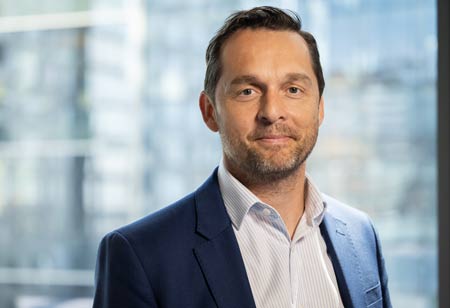Thank you for Subscribing to Healthcare Business Review Weekly Brief

R&D Productivity in a Challenging Industry
Healthcare Business Review
R&D Faces Efficiency Challenges to Reduce Time-To-Market for The Benefit of Patients
There are well-identified headwinds towards bringing products to the market with challenging regulatory processes, increasingly complex clinical studies, and strong pricing pressures all making the choices on where and how to focus very difficultly. The cost to develop a molecule is also very high and increasing, rising from an average of 1.3 B$ per successful molecule in 2013 to 2.3 B$ in 2020 (source Deloitte). Moreover, the long cycle times are well known, with the expectation of a new target concept taking somewhere from 12-17 years on average to receive market approval. Therefore, it is necessary to fix clear strategic choices and commit to them, to be able to positively impact the low probability of success and high attrition.
Act As a Global Actor
As an international research and development organisation, with research sites across Europe and the US and clinical development hubs in Europe, the US and Asia, we need to take advantage of a broad cultural and competency base. This is one clear source of innovation and can only be unlocked by embracing the rich internal diversity we have on offer, aligned to a scientific, technological and medical strategy that is stable for the mid-term. Working in open and close partnerships with the external environment is also a key lever, bringing the chance to enrich our internal innovation capacity, alongside the possibility to share investment and risk with partners for internal resource agility, and to accelerate our time-to-market.
"At Servier, as a global mid-sized pharmaceutical company, we are committed to turning meaningful innovation into new treatment possibilities for patients. We have made oncology one of our priorities and invested over 50% of our R&D budget in oncology, to become a renowned, focused, and innovative player in hard-to-treat cancer treatments. We also commit to maintaining our leadership in cardiovascular, metabolic, and venous disease through incremental innovation focused on R&D investment in late-stage development and life cycle management, for the benefit of the patient. Finally, to prepare for the future and continuously address unmet medical needs, we are building our portfolio of breakthrough innovations in neurosciences and immuno-inflammation. However, R&D is confronted with challenges and a fast moving-environment, so we need to adapt to strengthen our productivity. "
Focus On Quality Rather Than Quantity
A second important step we are taking to build higher performance in our R&D operation is to move away from a pipeline model built upon mathematical modelling and instead focus on a quality-based approach to successfully bring new molecules into preclinical testing and towards first-in-human studies. This is a crucial balance to find, needing to manage the expectations of our stakeholders to bring long-term sustainability to Servier, alongside the belief that delivering innovation requires an intimate relationship with well-placed risk.
Risk remains an important subject and a difficult one to address; it causes heavy processes, indecision and inertia. Constant vigilance is required to avoid the pitfalls of strong risk aversion.
Integrating AI And State-Of-The-Art Technologies into Our Reflection
The continued explosion of technology brings the additional opportunity to address our overall productivity and accelerate the development of our projects. Using machine-learning or artificial intelligence offers a seductive promise to rapidly accelerate or even circumvent slow and heavy R&D cycle times informed approaches. In clinical development, Real World Data is fast becoming a basic requirement to optimise and inform clinical studies, particularly in areas where precision medicine-based approaches are becoming the norm e.g., oncology. However, it remains expensive to integrate with external partners and still needs close monitoring to understand the optimal integration for the highest impact.
Reinvestment Of Our Experts’ Discoveries
At Servier, our experts are committed to making therapeutic progress a priority. This means we are centring our drug discovery and development through the application of platform-based approaches. Our teams focus on selected modalities; biologics-based, such as monoclonal antibodies, and small molecule-based, including antisense oligonucleotides. This platform-centricity allows us to re-enrich our core expertise throughout each project cycle, feeding the data and experience back into the teams and the algorithms, targeting a higher probability of success and accelerated process.
Have A People-Centric Approach
As a final statement on this complex topic, I believe the fundamental pillar to our success will be achieved through an unconditional focus on people. Firstly, the patients we serve, bringing their voice and experience much closer to our R&D efforts is a minimum and central to our hope to make new treatment possibilities a reality. Secondly, our Servier teams. Building trust, nurturing talent, and engaging actively with the rich and international ecosystems in which we operate will be key to unlocking higher R&D performance, and fostering the environment needed to bring truly transformative medicines forward for the patients we serve.
Brief biography
Ross Jeggo is the Global Head of Neuroscience and Immuno-inflammation at Servier, a mid-size pharmaceutical company headquartered in France and governed by a not-for-profit foundation. He has a PhD in neuroscience and has spent 20 years in the pharmaceutical industry, starting at a start-up Biotech/CRO in the UK, moving to Pharma with Lundbeck in Copenhagen, Denmark, before joining Servier in 2017.









